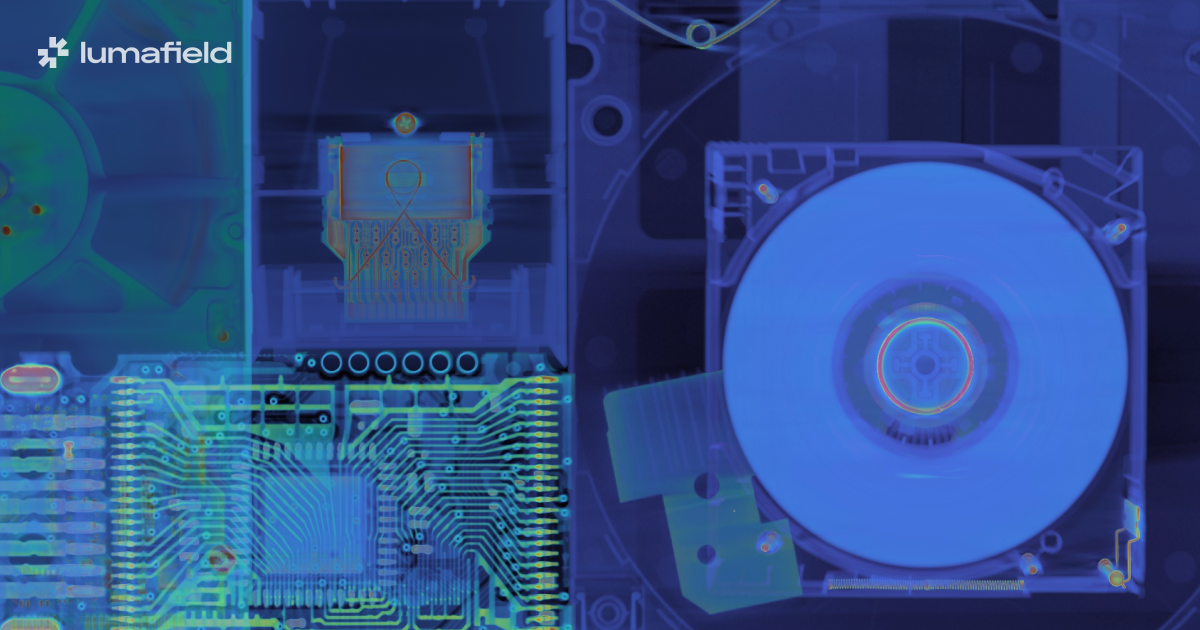Is this toner cartridge half empty or half full?
Everyone needs a printout occasionally. You rush to the office printer to pick it up, only to find that dreaded message: Replace Toner. But should we take the printer’s word for it? Lumafield’s Neptune industrial CT scanner says otherwise.
We grabbed a low toner cartridge from our office printer and popped it into our Neptune scanner. We did the same to a brand new one for comparison. What we found shocked us: not only was the empty one not really empty, but the full cartridge was far from full!
With the help of the automated measurements tool in Voyager—our browser-based industrial CT analysis software—we found that right out of the box, only about 20% of the space inside the cartridge reservoir is occupied by toner. A cartridge deemed "empty" by the printer has only slightly less toner, about 15%. That 5% range seems to represent the entire capacity of the cartridge. But what exactly is inside?

Whereas inkjet printers spray small drops of liquid ink onto paper, laser printers operate using plastics, electricity, and heat. They project an electrostatic charge onto a printing drum in the pattern of the images or text in the document. Each toner cartridge contains finely granulated plastic powder, which holds a static charge and clings to the oppositely-charged drum. The empty space in the cartridge hopper that we observed in our CT scans may be necessary for this powder distribution step of the process.
Finally, the printing drum transfers the powder to the paper, then hot fuser rolls melt and set it into place. Remember the warmth of a freshly photocopied page? This process is known as xerography, where Xerox got its name. Even now, a stack hot off the laser printer briefly retains the fuser roll’s heat.
CT scans are able to distinguish materials of different density. As we adjust our visualization in Voyager to isolate only denser materials, the toner powder disappears quickly; it's mostly made of polyester and is much less dense than the cartridge's housing. After we completely exclude the toner, a very small amount of denser powder remains in the visualization. This could be a toner additive or a ferrous developer powder that helps distribute the toner.

Our CT scans transform the toner cartridge into an hourglass, showing powder settled like sand that tells you how much time is left before a replacement is needed. At the same time, we discover why the familiar home remedy of shaking your toner cartridge actually works in bringing it back to life. Once you redistribute the powder, the sensor will see that it’s not quite empty, and you’ll also be able to squeeze a few more pages out of it.

This is just one example of the constantly-expanding applications for industrial CT technology. Engineers at top companies use Lumafield’s Neptune scanner to gain insight into their manufacturing workflows at every stage from research and development to assembly inspection and validation.
You can explore these and other scans in detail on Voyager. Reach out to our team to learn how Lumafield’s accessible industrial CT technology can work for you.







.png)


.png)
.png)